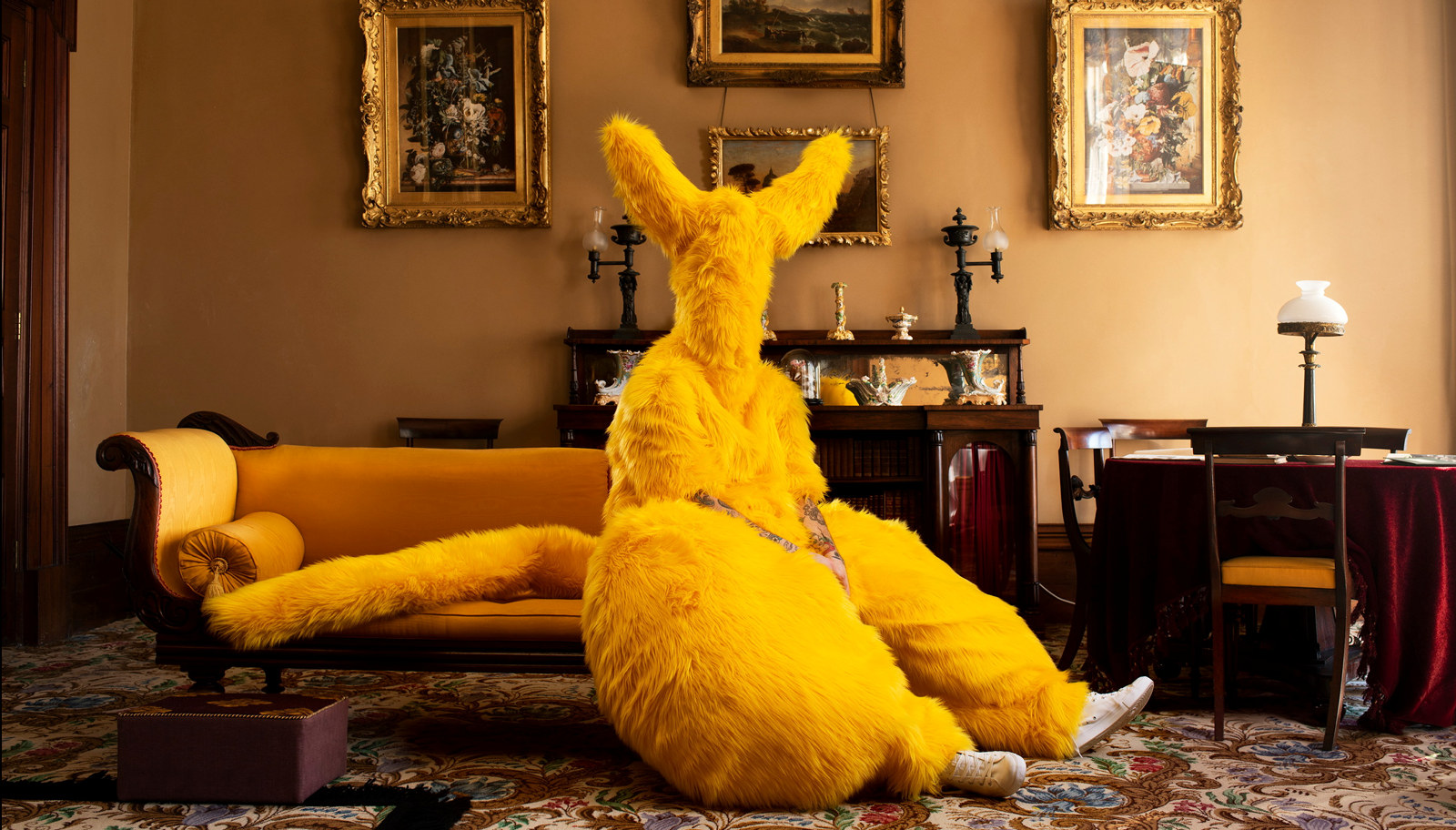Inspiring Iridescent: Vaucluse House
Find out more about the curatorial research that inspired artist Gerwyn Davies’s response to Vaucluse House, featured in the Iridescent exhibition.
A black and white figure haunts the drawing room of Vaucluse House, elegantly posed amid the opulence, yet alone.
Davies’s image takes inspiration from the story of Sarah Wentworth (nee Cox), the daughter of convicts and the wife of William Charles Wentworth, a significant colonial figure. Sarah bore two children to William before their marriage in 1829 – a social offence among the elites of the early colony. She was seen as an irredeemably fallen woman. Vaucluse House, with its distance and isolation, provided a haven for Sarah, a place to raise her children and live in secluded peace.
In the 1850s the Wentworths travelled extensively through Europe. On their return to Vaucluse in 1861, they brought crates of furniture and Grand Tour souvenirs with which to adorn the house. Among their purchases were hundreds of handpainted tiles from Naples, decorated in the style of Roman mosaics. These striking black and white tiles embellish floors and fireplaces throughout the house.
Davies’s creation, swathed in this same chequerboard pattern, occupies the Wentworths’ grand drawing room. With its fine crimson damask-covered furniture, this room was designed to impress potential suitors of Sarah’s seven daughters, and no expense was spared. Yet the chequered fabric battles with the multitude of patterns and textures, as though at odds with the space. Not quite fitting in, not quite harmonising. Much as Sarah may have felt as she struggled for social acceptance.
Related
Published on

